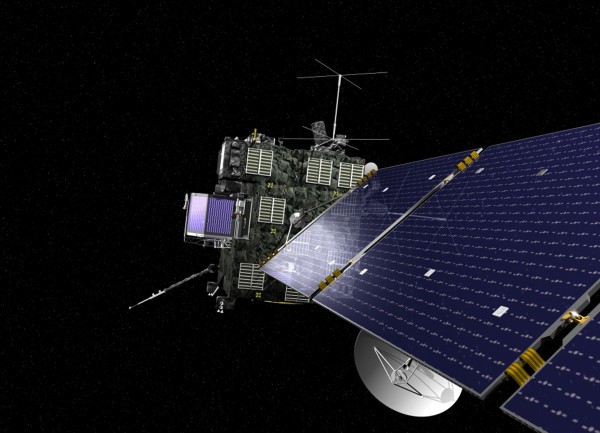Australian Company Looks to Use Lasers to Clear Away Space Debris
| Dino Lirios | | Nov 05, 2014 09:33 PM EST |
(Photo : Reuters) Space debris could potentially damage satellites and wipe out global communications and navigation systems.
An Australian company has taken the lead to remove orbiting space junk by using lasers.
Thousands upon thousands of objects litter space and orbit the Earth at high velocities. A collision between a spacecraft and a large piece of space debris would be catastrophic for the spacecraft, especially if this was a telecommunication satellite.
Like Us on Facebook
That's why Australian company Electro Optic Systems (EOS) is currently leading privtge sector efforts to track space debris floating in space, 38,000 kilometers above us.
EOS Chief Executive Ben Greene said national space agencies are worried about a piece of space debris crashing into their satellites. These satellites cost from anywhere of US $30 million to $30 billion.
It also doesn't help there are an estimated 20,000 orbiting objects bigger than footballs zooming around in Earth orbits. Greene says that a pile-up is inevitable in 20 years.
EOS' plan is to first use lasers to log orbital objects. This will just buy time, however.
In time, their lasers will develop into what they call, the "Star Wars" stage, where they can push objects into the atmosphere and have reentry destroy these objects.
"Even the smallest amount of light puts pressure on the surface it lands on," Greene says. "The mid-range of objects between 5 cm and 10 cm are very amenable to moving around with light, and they present 90% of the threat for satellites."
EOS has already attracted U.S. aerospace contractor Lockheed Martin for the object-logging phase. They are to build a new tracking station in Western Australia.
At the same time, EOS is also working with the Australian government's Mt. Stromlo Observatory in the Australian Capital Territory to research and perfect laser optics.
While Greene says they could be using these lasers in 10 to 20 years' time, the bigger problem is to industrialize the solution since EOS would need to build ground stations around the world.
Greene is confident in the plan and calls it the most aggressive plan in the world to solve the problem of orbiting space debris.
TagsLasers, Australia, space junk, Electro Optic System, EOS
©2015 Chinatopix All rights reserved. Do not reproduce without permission
EDITOR'S PICKS
-

Did the Trump administration just announce plans for a trade war with ‘hostile’ China and Russia?
-

US Senate passes Taiwan travel bill slammed by China
-

As Yan Sihong’s family grieves, here are other Chinese students who went missing abroad. Some have never been found
-

Beijing blasts Western critics who ‘smear China’ with the term sharp power
-

China Envoy Seeks to Defuse Tensions With U.S. as a Trade War Brews
-

Singapore's Deputy PM Provides Bitcoin Vote of Confidence Amid China's Blanket Bans
-

China warns investors over risks in overseas virtual currency trading
-

Chinese government most trustworthy: survey
-

Kashima Antlers On Course For Back-To-Back Titles
MOST POPULAR
LATEST NEWS
Zhou Yongkang: China's Former Security Chief Sentenced to Life in Prison

China's former Chief of the Ministry of Public Security, Zhou Yongkang, has been given a life sentence after he was found guilty of abusing his office, bribery and deliberately ... Full Article
TRENDING STORY

China Pork Prices Expected to Stabilize As The Supplies Recover

Elephone P9000 Smartphone is now on Sale on Amazon India

There's a Big Chance Cliffhangers Won't Still Be Resolved When Grey's Anatomy Season 13 Returns

Supreme Court Ruled on Samsung vs Apple Dispute for Patent Infringement

Microsoft Surface Pro 5 Rumors and Release Date: What is the Latest?










